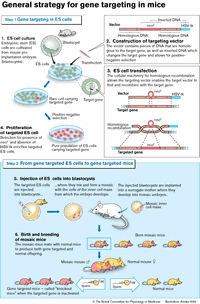Novartis research symposium reports advances in genomics, disease knowledge, technologies and modelling tools
Advertisement
Novartis scientists from around the world gathered at a research conference in Florence, Italy this week to report on new advances in genomics and disease knowledge and how the newest high-throughput technology, knowledge management and modeling tools are being used to improve and accelerate the drug discovery process. These programs are part of a three-year, multi-million dollar research initiative that aims to dramatically increase the quantity and quality of drug leads.
"In this dawning era of unprecedented scientific opportunity, the best way to stay ahead of the competition is to ensure that the necessary expertise, technologies and resources are available in-house," said Paul Herrling, Head of Global Research at Novartis Pharma AG. "Our research talent includes some of the best and brightest scientists in the world, and their work reflects a level of innovation and rapid, aggressive exploration that is setting the standard for the post-genomic world."
Dr Herrling said that Novartis met the challenge of the Human Genome Project completion with a massive increase in early phase research investment. The initiative includes the creation of a new drug discovery center, biology platforms for immunology and angiogenesis, and target platform proteases, as well as expansion of groups for Central Technologies and Information & Knowledge Management. In addition, a global recruitment drive is underway to add staff to new and expanded units. Approximately 450 new hires are expected, representing a 15-20% increase in research personnel.
New approaches to selecting potential targets for medicines, including broad in-vitro biological profiling of compounds will increase the number and quality of early therapeutic drug candidates – and shorten discovery times. This pace is expected to enhance Novartis Research's profile for high-quality external collaborations and alliances.
Most read news
Topics
Organizations
Other news from the department science

Get the chemical industry in your inbox
By submitting this form you agree that LUMITOS AG will send you the newsletter(s) selected above by email. Your data will not be passed on to third parties. Your data will be stored and processed in accordance with our data protection regulations. LUMITOS may contact you by email for the purpose of advertising or market and opinion surveys. You can revoke your consent at any time without giving reasons to LUMITOS AG, Ernst-Augustin-Str. 2, 12489 Berlin, Germany or by e-mail at revoke@lumitos.com with effect for the future. In addition, each email contains a link to unsubscribe from the corresponding newsletter.
































































